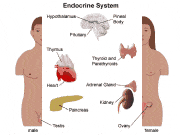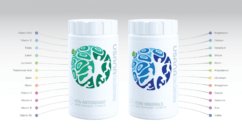Includes your full personal report and plan from Jo, with a Zoom consultation to run through the diagnosis and prognosis.
L3 Toxic Element Clearance Profile (Urine)
£565.00
The Toxic Element Clearance Profile offers an advanced, comprehensive assessment of toxic and potentially toxic elements excreted in the urine. In addition to measuring classic elemental toxics, this profile includes elements used in medical, aerospace, nuclear and high-tech electronics industries. Use of these potential toxins is increasing because of their growing commercial, industrial, and medical applications.
Description
- Aluminum
- Antimony
- Arsenic
- Barium
- Bismuth
- Cadmium
- Cesium
- Gadolinium
- Gallium
- Lead
- Mercury
- Nickel
- Niobium
- Platinum
- Rubidium
- Thallium
- Thorium
- Tin
- Tungsten
- Uranium
Analytes
Sources of Exposure
- Metal refining
- Fabrication of nuclear reactor fuel assemblies
- Alloying
- Electronics and computer manufacturing
- Plating and parts manufacture in aerospace and machine tool industries
- Welding and metal shaping
- Plumbing
- Oil refining
- Manufacture of pigments and coatings
- Military or police service (with weapons use)
- Handling and disposal of wastes
- Petrochemical production
Health Consequences of Exposure:
Evidence suggests that chronic toxic element exposure can adversely affect:
- Energy levels
- Reproductive function
- Cancer risk
- Degenerative conditions
- Neurological development and function
- Respiratory, cardiac, hepatic and immune functions
- Cognitive and emotional health
Researchers are discovering detrimental health effects of toxic heavy metals at lower and lower exposure levels. This raises the issue of whether any toxic element level in the body is safe.
Toxic Element Testing
The Toxic Element Clearance Profile assesses urinary excretion of elements acquired through either chronic or acute exposure. The test enables practitioners to effectively monitor the progress of detoxification regimens and nutrient element status during treatment. All toxic metals are reported as micrograms/g creatinine or as micrograms per 24 hours (if a 24-hour urine specimen is provided).
“Provocation” Urine Testing
Urine can be collected following the administration of a “challenge” agent (such as EDTA, DMSA, DMPS, and D-penicillamine) targeting specific toxic elements. Depending on the agent administered, urine collection may be spot or short-term (2-6 hours), intermediate (8-12 hours) or a complete 24-hour collection. Since many detoxification agents are element-specific, this approach is best utilised when the clinician suspects specific heavy metal toxicities.
NOTE: This form of testing requires specific instruction of appropriate chelation “provocation” protocol by the reviewing practitioner.
Take a look at an example report and how you go about collecting your sample
Reviews
Only logged in customers who have purchased this product may leave a review.
You may also like…
-

Proactive about Pathologies
Courses Included
£60.00 More InfoAdd to cartProactive Pathology gives the student basic diagnostic tools to determine pathological changes in Clients/Patients health, encouraging early detection practice within their environment…
-

Metabolic Syndrome & World Health Statistics
Courses Included
£95.00 More InfoAdd to cartMetabolic syndrome is the medical term for a combination of diabetes, high blood pressure and obesity.
-

Pe_73 Blood Pressure
Courses Included
£55.00 More InfoAdd to cartThe consequences of high blood pressure (HBP), Prescribed medications and their effects and side-effects, How to reduce HBP, not just control, with certain foods and exercise programs and all the natural remedies!








Reviews
There are no reviews yet.